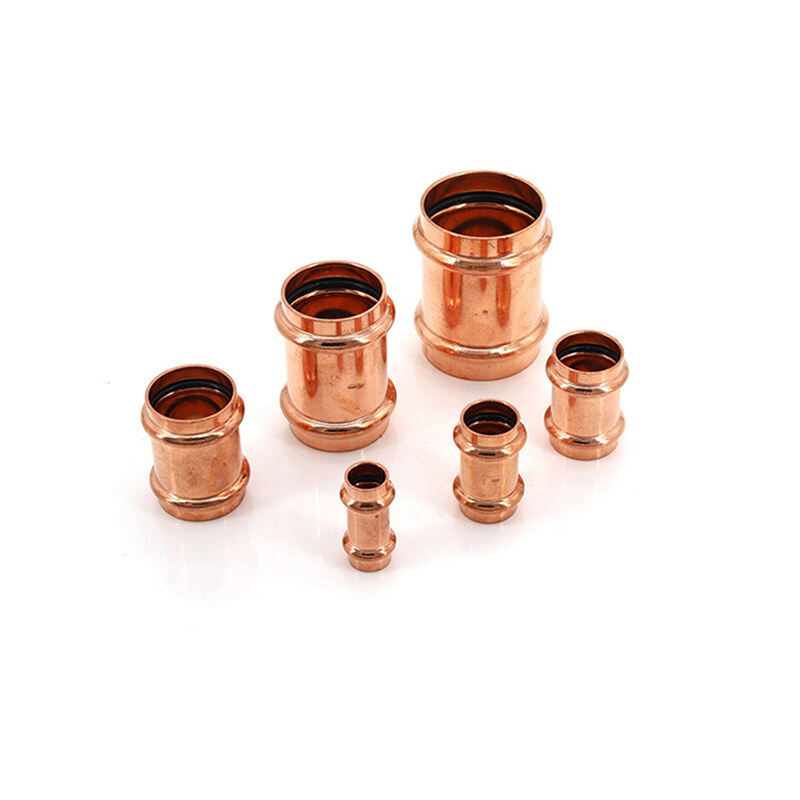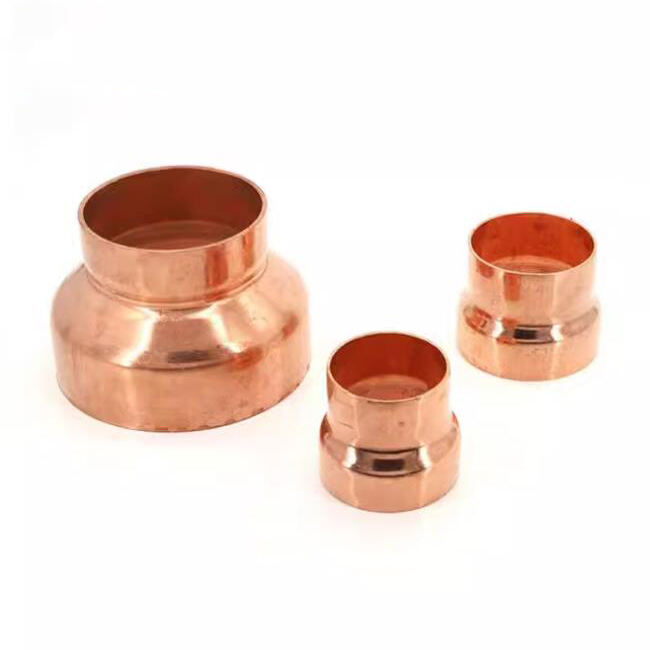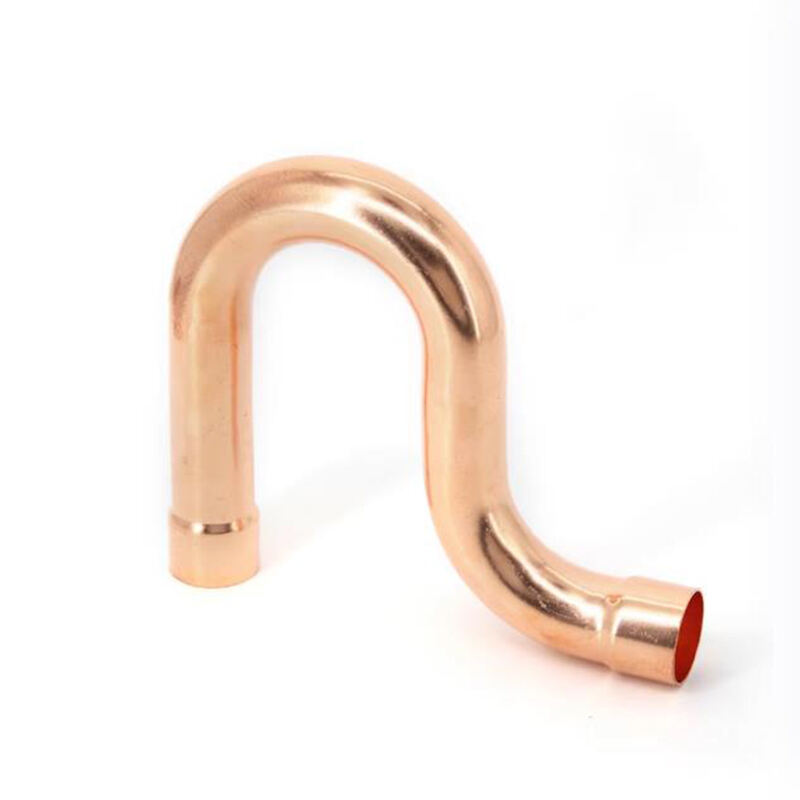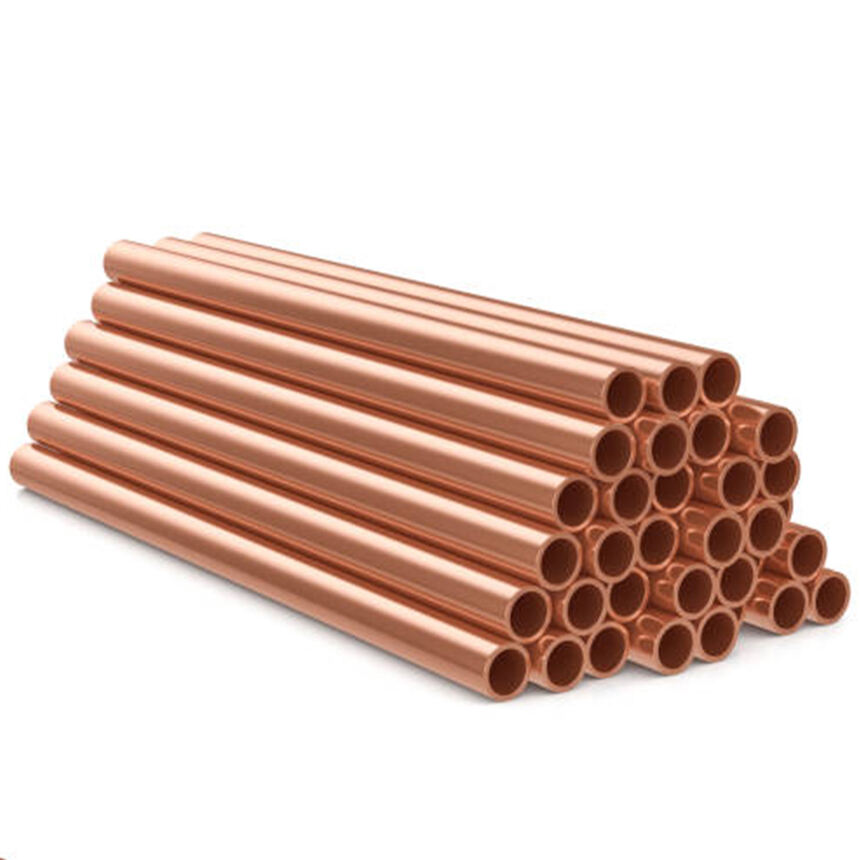Understanding Your Plumbing System Requirements
Assessing Pipe Material Compatibility
Knowing how different pipe materials work together matters a lot when building or fixing up a plumbing system. Copper, PVC, and brass all behave differently, so throwing them together without thinking about it often causes big problems down the road. Take copper and steel pipes for instance they tend to fight each other chemically, leading to what plumbers call galvanic corrosion that basically eats away at the pipes from inside out. The International Plumbing Code actually addresses this issue directly because incompatible materials just don't play nice together in the long run. Most experienced plumbers will tell anyone who asks that taking the time to match compatible materials upfront saves countless headaches later on, especially when dealing with water pressure fluctuations and temperature changes throughout the year.
Determining Pipe Diameter and Connection Types
Getting the pipe diameter measurements right matters a lot when it comes to making sure everything fits properly and works as intended. Most folks grab either calipers or a good old fashioned tape measure to figure out what sizes they need throughout their plumbing setup. Now about those connections between pipes. Picking the right kind really makes a difference too. Threaded connections work great where things need to hold up under stress and last forever. Slip fits are handy when putting together something quickly without too much hassle. And then there's compression fittings that many plumbers swear by whenever they need to take stuff apart regularly. Knowing all this helps create a plumbing system that stays put where it should be while getting the job done efficiently without leaks or headaches down the road.
Evaluating System Pressure and Flow Needs
Getting to know what kind of pressure and flow our plumbing system needs helps pick out the right fittings and adapters for the job. The pressure rating on parts is usually listed in PSI pounds per square inch and needs to match what the system actually handles to keep things safe and running smoothly. Flow rates vary quite a bit depending if we're talking about home pipes versus those in bigger buildings. Most houses need much less water flowing through them at once compared to offices or factories. Take kitchen faucets for example residential ones generally run around 1.5 to 2.2 gallons per minute whereas commercial setups often require stronger flows. Knowing all this stuff makes it easier to find components that fit properly into whatever plumbing setup we have going on.
Types of Pipe Adapters and Their Applications
Threaded vs. Slip-Fit Adapters
When it comes to joining pipes in plumbing work, most plumbers will tell you there are really only two main options out there: threaded connections and those slip-fit types. Let's start with threaded adapters first. These have those little ridges around them that screw into place when connecting pipes of different sizes together. They create pretty solid joints that stand up well under pressure, so they're great for places where things get intense down below ground level. Now slip-fit adapters work differently altogether. Just slide them over the end of a pipe and apply some glue to make sure everything stays put. Most folks prefer these when dealing with pipes that match up in size exactly, particularly if they need something quick to put together later take apart again without too much hassle. Choosing between these two styles really boils down to what kind of job needs doing at any given moment. For permanent installations where strength matters most, go with threads. But when flexibility counts more than anything else during setup, slip-fits tend to win hands down among professionals who've been around the block a few times.
Compression Fittings for Copper Tubes
Compression fittings play a big role in plumbing systems, especially when connecting copper pipes together. The basic idea is pretty straightforward actually. When someone installs these fittings, they basically squeeze down on a little brass ring (called a ferrule) against the copper pipe with a nut that gets tightened up. This creates a seal that stops leaks from happening. What makes compression fittings so handy? Well, they come in really useful when there's not much room to maneuver or when soldering just isn't an option for safety reasons. Take under sink installations for example. Those cramped spaces make it almost impossible to get proper soldering equipment in there. That's where compression fittings shine brightest. Both amateur tinkerers and seasoned plumbers reach for these all the time when dealing with copper tubing because they just work so reliably without needing special tools or skills.
Push-to-Connect Solutions for Brass Plumbing
Brass plumbing jobs just got a whole lot easier thanks to push-to-connect adapters. These handy connectors cut down on frustration for anyone wanting their plumbing work done faster. No need for wrenches or messy glue when these things snap right into place. Some research shows plumbers can save over half their time on installations using brass push connections instead of traditional methods. They really shine during those urgent situations where water needs stopping fast, or when contractors have multiple homes to outfit in a day. With all this convenience factor, it's no wonder why more plumbers are switching to these push fittings for everyday jobs around town.
Material Considerations for Pipe Connectors
Brass Fittings for Corrosion Resistance
Brass fittings stand out because they resist corrosion so well, which makes them great for use in plumbing systems. They don't rust easily and hold up against different types of corrosion, especially important in places where there's lots of moisture or heat. Studies show brass tends to last longer than most other metals that start breaking down after being around water for a while. Some tests suggest brass pipe connectors can stick around for about 70 years before needing replacement, though actual results may vary depending on installation quality and local conditions. This long life means fewer repairs down the road, saving money over time whether installed in homes or businesses looking for reliable plumbing solutions.
Copper Pipe Adapters in HVAC Systems
Copper pipe adapters are really important components in HVAC systems because they conduct heat so well. When copper transfers heat efficiently, it helps these systems work better overall. This means less energy gets wasted and temperatures stay more stable throughout buildings. Most people in the heating and cooling business know this already since copper doesn't break down easily even when exposed to extreme temperatures changes day after day. We've seen this firsthand too many times to count where copper piping lasts decades without issues while other materials need constant repairs. The durability factor alone makes copper a smart choice for maintaining consistent indoor climate conditions whether it's a small home or massive office complex somewhere.
Plastic vs. Metal: Durability Comparisons
Metal fittings like brass and copper tend to last much longer than their plastic counterparts when it comes down to durability. Plastic fittings sure are lighter weight and simpler to put together, but they just don't hold up as well when exposed to extreme heat or pressure situations. We've seen plenty of cases where these plastic components start failing after only a few years of service. Brass and copper fittings tell another story entirely though. These metals stand up remarkably well against wear and tear, requiring almost no maintenance at all even in tough operating environments. Studies across various industries consistently show metal fittings have far fewer failures and significantly extended life spans compared to plastic alternatives. That's why most professionals still reach for metal when dealing with essential systems. But wait there's a catch. In settings where corrosive substances are part of the equation, plastic actually has the upper hand because it resists degradation from chemicals better than most metals do. So engineers need to weigh this factor carefully depending on what kind of environment they're working with and what materials will be flowing through those pipes.
Sizing and Compatibility Factors
Matching Adapter Sizes to Pipe Dimensions
Getting the right adapter size to fit pipe dimensions properly matters a lot if we want to stop leaks and keep things flowing smoothly through our systems. Following those manufacturer specs about what size adapter works best with specific pipe measurements isn't just good practice, it's pretty much required for any installation job worth doing right. Take a standard 1 inch inner diameter pipe for example. Most plumbers know from experience that getting an adapter made specifically for that size makes all the difference between a working connection and one that eventually fails. The same goes for those commonly used 3/4 inch pipes found throughout many residential and commercial settings. Industry manuals and technical guides help clarify these details so installers don't guess wrong. Proper matching leads to installations that last longer without developing those annoying little leaks nobody wants to deal with down the road.
Transitioning Between Different Pipe Materials
Switching between various types of pipe materials requires picking the right adapters so everything stays connected properly without leaks or failures down the line. For instance, when connecting copper pipes to brass fittings, plumbers need special adapters that can deal with how these metals expand and contract differently over time. Otherwise, those joints might crack or leak eventually. Most seasoned professionals stick to connectors made specifically for material transitions because they know regular fittings just don't cut it long term. These specialized connectors become even more important when working with copper tubes going into PVC systems. The right adapter makes all the difference here, creating strong connections that last through years of water pressure changes and temperature fluctuations without failing unexpectedly.
Schedule 40 vs. Schedule 80 Compatibility
Getting familiar with what separates Schedule 40 from Schedule 80 pipes matters a lot when it comes to making sure everything fits together properly and works for the job at hand. Schedule 40 pipes have thinner walls which makes them good choices for situations where water pressure isn't too high. Think about things like garden irrigation systems or fixing leaks around the house. On the flip side, Schedule 80 pipes stand out because they're built tougher with thicker walls. These are typically used where there's going to be much higher pressure demands, like in factories or places handling chemicals. When putting together any kind of piping network, plumbers need to pair these different pipe types with fittings that match their ratings so nothing breaks under stress. The decision between Schedule 40 and Schedule 80 really boils down to what kind of work needs doing and how intense those conditions actually are. Choosing correctly means the whole system stays strong even when faced with tough operating environments instead of failing prematurely.
Pressure and Temperature Ratings
High-Pressure Systems and Brass Plumbing Fittings
Brass fittings stand out because they can take on high pressure situations without breaking down, whether in homes or factories. The reason? Brass just doesn't corrode easily and has solid strength properties. Most brass fittings work well within pressure ranges between 300 and 3000 psi. A study by the American Society of Plumbing Engineers backs this up, showing brass fittings hold up against really tough conditions over time. That means these fittings last longer even when put through their paces in harsh settings. Anyone looking at brass for high pressure jobs should definitely check those spec sheets and look at actual test results before making a purchase. Getting the right fit matters a lot for avoiding problems down the road.
Thermal Expansion in Copper Pipe Connectors
The issue of thermal expansion really matters when looking at copper pipe connectors in the long run. When temps go up and down, these copper pipes just keep expanding and contracting, which puts stress right on those joints and can eventually lead to annoying leaks nobody wants. We see this problem show up all the time in plumbing systems located in areas where weather changes dramatically throughout the year, or worse yet, inside factories where temperature swings are even more extreme. If someone wants to deal with thermal expansion properly, they should think about adding expansion joints or creating loops within their piping system during installation. These little additions actually work wonders because they give the system somewhere to flex without breaking apart completely, keeping everything intact and functional for much longer periods.
Chemical Resistance Requirements
When it comes to plumbing systems, picking materials that stand up to chemicals isn't just important—it's absolutely essential if we want these systems to last. Chlorinated water and some cleaning products actually eat away at many common plumbing materials over time. Take brass fittings for instance. They work great against most corrosion issues but start showing their limits when faced with strong acids or alkalis. That's where alternatives like stainless steel or CPVC really shine. These materials handle harsher chemical environments much better. Before making any material choices, plumbers need to know exactly what kind of fluids will be moving through the pipes. Checking those compatibility charts makes all the difference between a system that works safely for years versus one that fails prematurely due to chemical reactions.
Installation Best Practices
Proper Sealing Techniques for Copper Tubes
Getting the seals right on copper tubing makes all the difference when it comes to avoiding leaks in plumbing systems. Most plumbers rely on soldering as their go to method here. Basically what happens is they melt some filler metal between the copper pipes to create a solid connection. But getting good results takes careful control of heat levels and making sure those connection points are spotless before starting. Sealants also play a big role, particularly with threaded connections where there's more surface area to worry about. Many professionals swear by PTFE tape for these situations since it really does stop water from escaping through tiny gaps. The folks at organizations like the Copper Development Association back this up in their manuals, noting that proper sealing practices not only keep things watertight but actually extend how long those copper pipe setups will last without needing repairs or replacements.
Avoiding Common Leak Points in Brass Fittings
Most leaks in brass fittings happen where they connect together or when connections aren't tight enough. Getting these joints right from the start makes all the difference. Plumbers know that making sure everything lines up properly and fits snugly during installation prevents most headaches down the road. The wrong size fitting creates problems no matter how tight it seems. Industry data shows something surprising actually: around 90% of fitting failures come down to bad installation work. So taking time to pick the right fittings for each job and checking every connection twice isn't just good practice, it literally extends how long a plumbing system lasts before needing repairs or replacements.
Tool Requirements for Different Adapter Types
Getting the job done right when working with different adapters starts with having the proper equipment on hand. Pipe cutters, deburring gadgets, and those trusty adjustable wrenches should definitely make the cut for most jobs. For installations that get a bit complicated, especially with copper piping systems, a good quality tube bender becomes almost indispensable. The right tools not only save time but also prevent costly mistakes down the line. Proper bending techniques help avoid kinks and pressure points that could lead to leaks later on. Let's take a look at how these tools stack up against each other:
- Pipe Cutters: For clean and accurate pipe end cuts.
- Deburring Tools: To smooth the edges post-cut, preventing leaks.
- Adjustable Wrenches: Essential for tightening fittings without over-torquing.
Investing in these tools ensures that copper and brass fittings are properly installed, enhancing both safety and efficacy in plumbing systems.
Mismatched Materials in Plumbing Systems
Using different materials together in plumbing systems tends to create problems that weaken the whole setup. Copper pipes joined straight onto galvanized steel pipes commonly suffer from what's called galvanic corrosion, which eventually causes leaks and breaks down the system. According to some industry reports including ones from Plumbing Manufacturers International, around 5 out of every 100 plumbing failures happen because of mismatched materials. To avoid all this trouble, plumbers need to stick with compatible metals and get the right connectors for their jobs. Take copper connectors for copper tubes as an example they work best together and cut down on wear and tear over years of service. Most experienced tradespeople know this stuff already, but it never hurts to double check before making connections.
Overlooking Expansion Joints in Copper Pipes
Expansion joints really matter when it comes to copper pipe systems because they handle all that expanding and contracting from temperature changes, which helps keep pipes from getting stressed out and damaged over time. Skip putting them in and watch out for serious pressure problems down the line that might crack pipes or create annoying leaks everywhere. Take what happened in California last year as an example the American Society of Civil Engineers looked into. Some poor planning meant no expansion joints were installed there, and boom we had a massive water main rupture causing thousands in repairs. Getting these joints right from the start makes all the difference. They don't just prevent disasters but also mean the whole plumbing system lasts longer without constant fixes and replacements.
Ignoring Local Plumbing Codes and Standards
When picking out pipe adapters, following local plumbing codes really matters. Sticking to these rules means installations actually meet those safety and efficiency goals everyone talks about, which cuts down on problems later on and keeps people out of trouble legally speaking. Contractors who skip over these standards often end up paying the price through hefty fines or having to tear everything apart and start again. The IAPMO folks have all sorts of helpful materials online where plumbers can find what their area requires specifically for different types of connections. Getting familiar with these local rules makes sense both practically and legally. Most experienced tradespeople know that proper adherence doesn't just satisfy inspectors it actually makes the whole system work better in real world conditions too.









